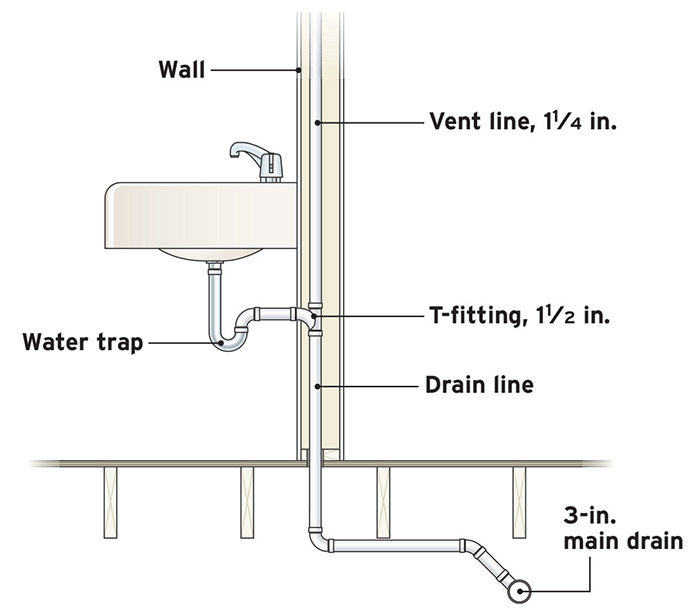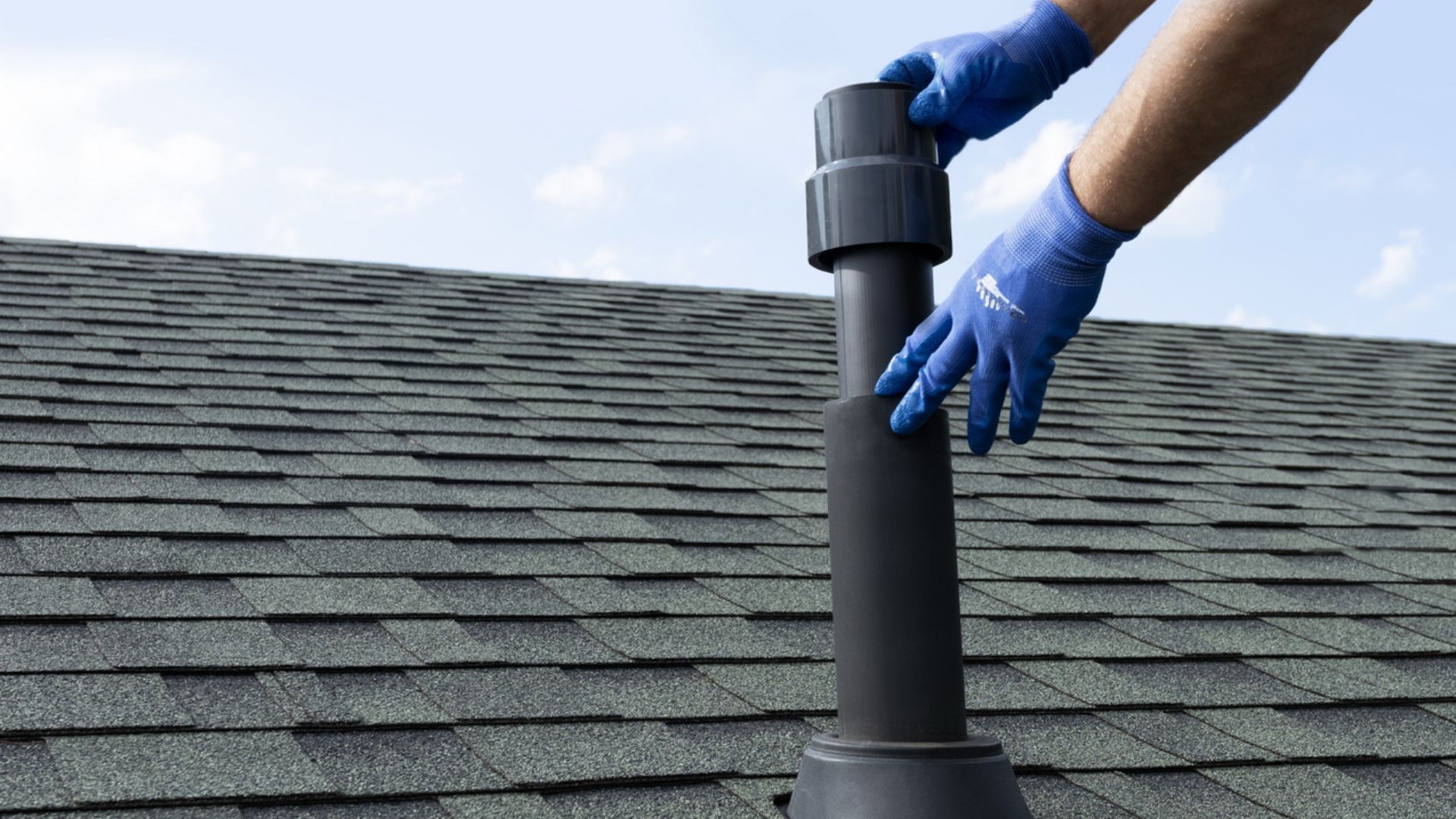Just how do you feel in relation to Essential Plumbing Vent Pipes: Understanding Their Role?

Proper ventilation in pipes systems is usually forgotten, yet it is important for preserving the capability and security of your home's plumbing. Air flow assists control air pressure, protect against the build-up of damaging gases, and make certain the efficient elimination of waste. In this overview, we will certainly discover the value of correct plumbing ventilation, just how it functions, and the benefits it offers your pipes system.
How Air Flow Functions in Plumbing Solutions
Air Pressure Regulation
Appropriate ventilation preserves balanced air pressure within the pipes system. When water flows with pipelines, it displaces air. Without appropriate ventilation, this variation can develop negative stress, leading to slow down drains or siphoning of water from catches, which can cause undesirable smells to seep into the home.
Preventing Drain Gas Buildup
One of one of the most essential functions of plumbing vents is to prevent sewage system gases, such as methane and hydrogen sulfide, from gathering within the home. These gases can posture major health and wellness threats and are highly flammable. Vent pipes permit these gases to get away safely outside.
Assisting in Waste Removal
Ventilation assists in the efficient elimination of wastewater by preventing airlocks in the water drainage system. When air can move easily through the vents, it permits water and waste to stream smoothly via the pipelines, minimizing the danger of clogs and back-ups.
Benefits of Correct Ventilation
Improved System Effectiveness
Effectively aerated pipes systems run much more efficiently, with fewer obstructions, faster draining pipes, and much less stress on the pipelines. This effectiveness expands the lifespan of the plumbing system.
Improved Air Quality
By stopping sewer gases from entering your home, correct air flow adds to much better indoor air quality, making your living environment healthier and more comfy.
Stopping Water Damage
Adequate air flow assists prevent water from being siphoned out of catches, which can result in drain gases entering the home and creating water damage with time.
Steps to Make Certain Correct Ventilation
Consulting Pipes Codes
Constantly seek advice from local plumbing codes when making or customizing your plumbing system. These codes give the needed standards for proper venting and guarantee your system satisfies security criteria.
Regular Evaluation and Upkeep
Normal examinations can aid recognize prospective air flow problems before they become major issues. Upkeep jobs, such as cleaning air vent pipes and checking for clogs, are crucial for keeping the system in good working order.
Professional Installment
For new installations or significant modifications, it's a good idea to hire an expert plumbing professional. They have the competence to make sure the ventilation system is appropriately created and set up according to code.
Recognizing Air Flow in Plumbing
Ventilation in plumbing refers to the network of pipelines that permit air to stream through the water drainage system. These vents offer numerous purposes, including regulating air pressure within the pipelines, stopping sewage system gases from going into the home, and aiding in the smooth flow of wastewater.
Types of Plumbing Vents
Key Stack Vent
The primary pile air vent, also referred to as the vent pile, is the key vent in a plumbing system. It expands from the major drainpipe line up with the roof, allowing gases to escape and fresh air to enter the system.
Branch Vent
Branch vents attach to the main pile vent and serve specific fixtures, such as sinks, toilets, and showers. These vents guarantee that each component has sufficient ventilation to operate correctly.
Air Admission Valve (AAV).
An Air Admittance Valve (AAV) is a one-way shutoff that allows air to go into the plumbing system without the demand for a typical vent pipe expanding through the roof covering. AAVs are typically utilized in renovations or areas where setting up a conventional air vent is not practical.
Indicators of Poor Ventilation in Pipes.
Slow Draining Fixtures.
If your sinks, bathtubs, or commodes are draining gradually, it could be an indicator of inadequate air flow. Insufficient air flow can develop a vacuum cleaner impact, making it hard for water to drain pipes properly.
Gurgling Sounds.
Gurgling audios originating from drains pipes are typically an outcome of air being drawn with water traps because of unfavorable pressure in the pipelines. This is a clear indication of inadequate air flow.
Undesirable Odors.
Sewage system smells inside your home are a warning that your pipes system is not properly ventilated. This can suggest that sewer gases are not being sufficiently aired vent outside, bring about possibly hazardous conditions.
Common Air Flow Errors.
Poor Vent Sizing.
Utilizing undersized vent pipelines can result in poor air circulation and stress discrepancies in the system. It's essential to utilize vents that fulfill the certain requirements of your plumbing system.
Improper Vent Positioning.
Placing vents also far from the fixtures they offer can decrease their effectiveness. Proper positioning guarantees that air can flow easily and efficiently with the system.
Ignoring Code Demands.
Building ordinance provide details standards for pipes air flow. Ignoring these codes can result in a system that fails to work correctly and might lead to expensive repairs or carcinogen.
Final thought.
Correct air flow is a vital element of any plumbing system, guaranteeing that it works efficiently and safely. By recognizing the relevance of ventilation, identifying the indications of inadequate ventilation, and taking steps to preserve your system, you can prevent pricey issues and shield your home's air top quality.
What is a Plumbing Vent and it's used for?All plumbing systems in residential and commercials construction have a plumbing vent. It doesn’t just vent unwanted odors from the drainage system to the outside; it actually serves an important purpose by supplying air to the system.
The plumbing drainage system is actually called a drainage, waste and vent (DWV) system. When water flows down the piping, an air supply (vent) is needed to allow the water to flow. Think of the vertical pipe as a drinking straw. If you plug the top end of a straw, liquid won’t drain from it.
The DWV system in your building consists of a series of pipes connected to each fixture; they extend above each fixture, and the system terminates at an open pipe that extends through the roof. This piping allows air into the system and prevents unbalanced pressures in the piping.
?The vent also prevents the system from drawing water out of a trap at the fixture with the characteristic “glug-glug-glug” as the drain gasps for air. Plumbing traps should drain smoothly and never “glug” or gasp for air.
If you have a drain that empties slowly or gurgles as it drains, this may indicate a venting problem. If you flush a toilet and the sink gurgles, there’s definitely a vent problem. It is good idea to have a Plumber check this.
https://www.ameliashomeinspection.com/blog/what-is-a-plumbing-vent-and-its-used-for

Do you like more info about What Is a Plumbing Vent and Why Is It Important? Post feedback down below. We'd be delighted to see your ideas about this post. We are looking forward that you visit us again soon. You should take the time to share this entry if you enjoyed it. Thanks for your time. Revisit us soon.
Call Today